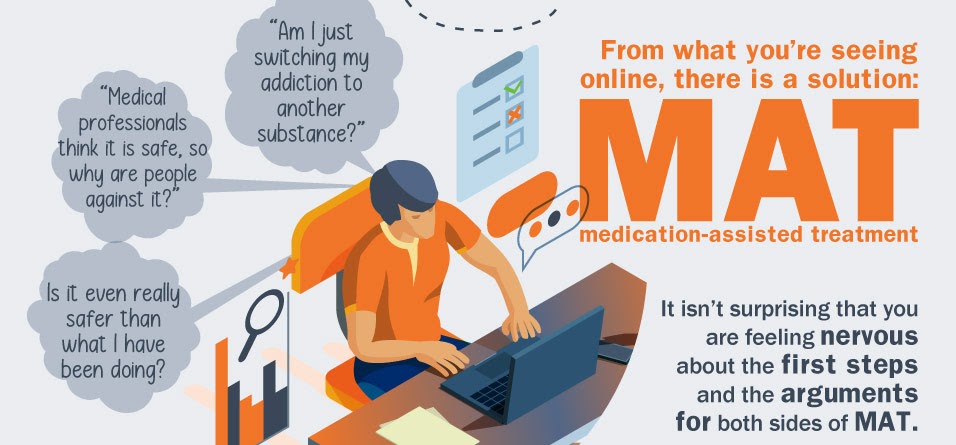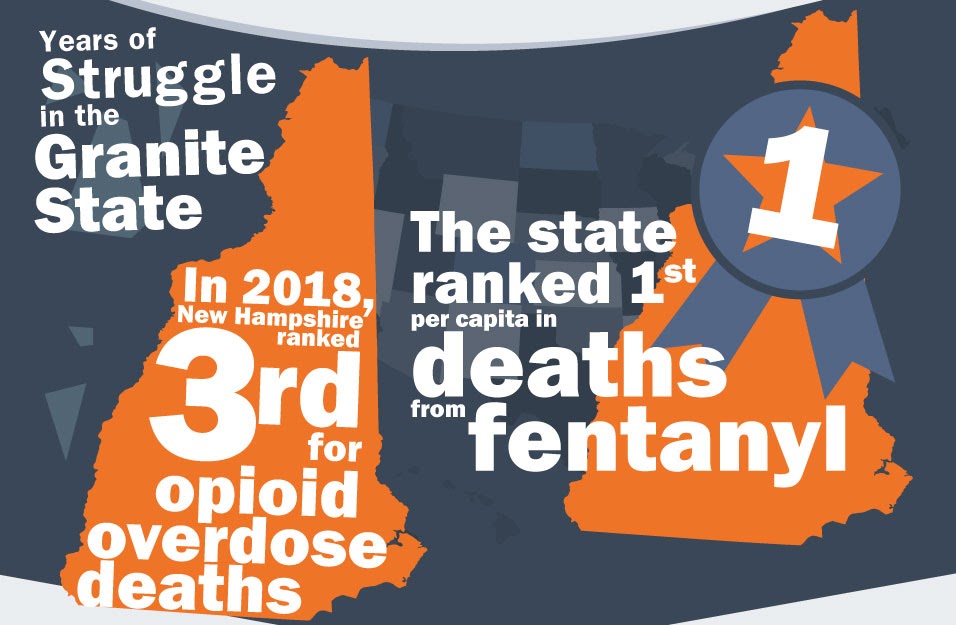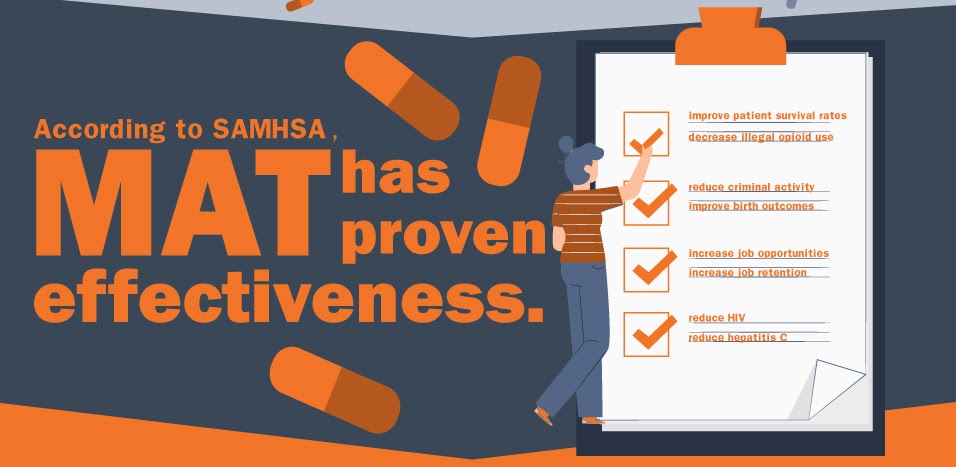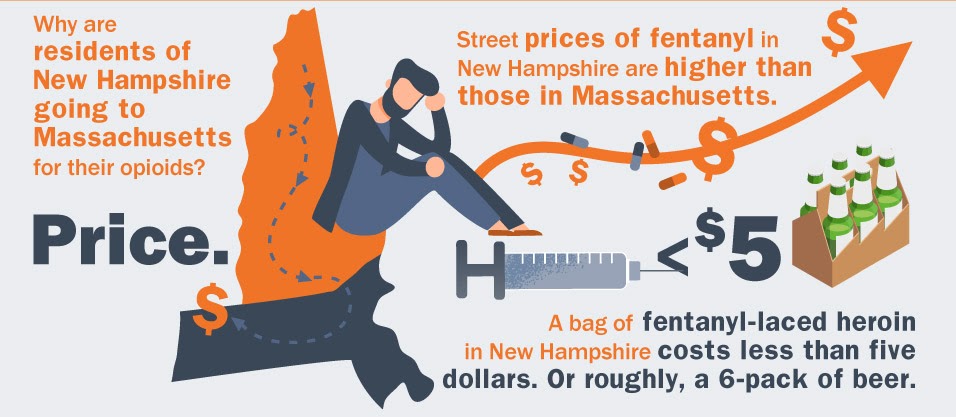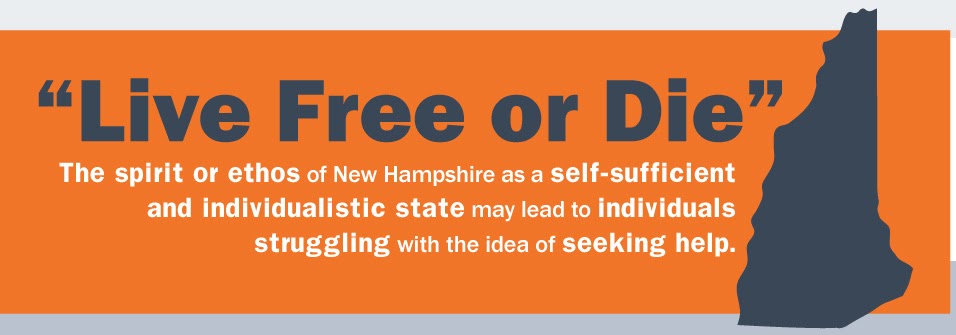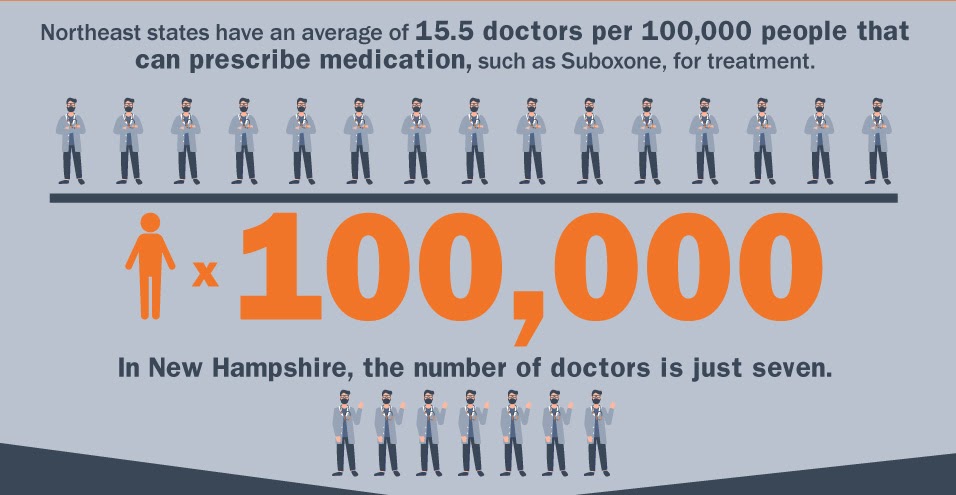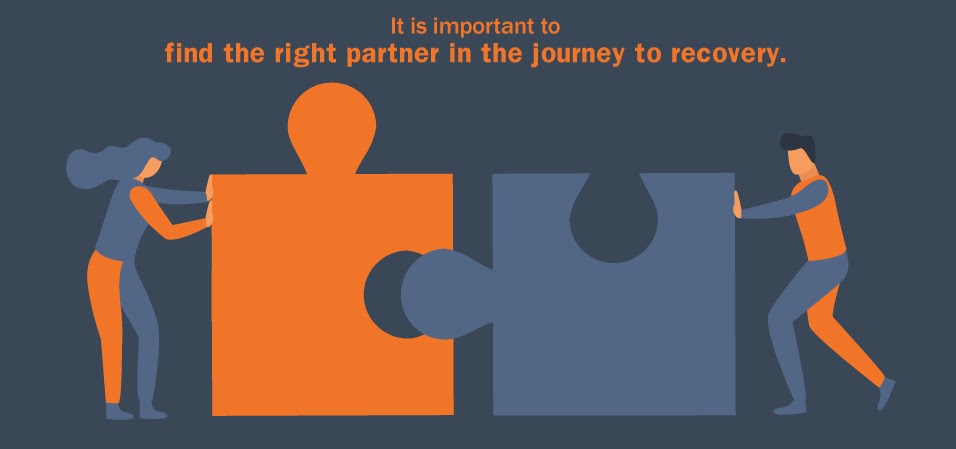At this point, it feels like we all know someone who’s been impacted by the opioid epidemic. We’ve watched our friends and neighbors suffer through horrible addiction and dependency issues that strip away their jobs, their families, their well-being, and sometimes their lives.
The cycle is all too familiar in New Hampshire.
For years, our state has battled an opioid crisis that claims the lives of our fellow New Hampshirites to the point that we’ve become a national leader in per capita overdose deaths.
We must turn our attention to understanding why things have gotten so bad here, and how we can change our course.
One of the clearest answers to this crisis is expanding access to medication-assisted treatment (MAT). When searching through the options of MAT, you may quickly find yourself in a bit of a rabbit hole of arguments both for and against this model of treatment.
It seems like medical professionals think it is safe, but why are so many people against it?
Is it just switching addiction to another substance? Is it really any different?
Is it really even safer than what is on the streets?
From the research and the lingering questions, it isn’t surprising there are nervous feelings about the first steps and the arguments for both sides of MAT.
Most often, MAT is used as a treatment for those battling a substance use disorder to opioids. In this treatment, a medication is prescribed in order to relieve psychological cravings, normalize brain and body functions, and block the euphoric effects of the opioids.
The answers to your lingering questions are often complex, but come down to facts. According to many researchers and medical professionals, medication-assisted treatment has proven to help communities struggling with an opioid crisis, and elevated overdose and death rates.
Areas of the country, like New Hampshire, have been struggling for many years, and the time has come to look deeper into the positive results that MAT can have.
Years of Struggle in the Granite State
In New Hampshire, the opioid epidemic has been at a critical point for years now. New Hampshire ranked third in the entire country in 2018 for opioid overdose deaths.
Our state also ranked first per capita in deaths from fentanyl, a synthetic opioid used in the medical field to treat severe pain, typically from advanced stages of cancer. According to the Centers for Disease Control (CDC), fentanyl is 50 to 100 times stronger than morphine.
Since 2015, deaths from fentanyl and other opioids have tragically remained very common in New Hampshire. Most cases of fentanyl-related harm in New Hampshire and across the United States come from illegally-made fentanyl, which is used to produce heroin-like effects and is often mixed with heroin to increase euphoria.
Opioid overdoses are killing an average of one person every day in New Hampshire. At this rate, in a state with just 1.3 million residents, it won’t take long for everyone to know someone who has died from opioid use.
There’s Hope for New Hampshire Through Expanded Availability of MAT Services
MAT’s effectiveness in combating opioid addiction has been proven. According to the Substance Abuse and Mental Health Services Administration (SAMHSA), around 2 million people in the United States were facing an opioid use disorder in 2018.
SAMHSA also states that MAT has been proven to improve survival rates, decrease illegal opioid use, reduce criminal activity, improve birth outcomes, increase employment opportunities and job retention, and reduce the incidence of HIV and hepatitis C.
Despite its proven effectiveness, some people still hold misconceptions about MAT. Many of these misconceptions are rooted in the stigma surrounding drug use and addiction.
Dr. Karen Van Gundy is a professor at the University of New Hampshire who has spent years researching mental health, substance use and gender. She earned her doctorate from the University of Miami in sociology, and she has seen the misconceptions about MAT firsthand.
“A lot of our country’s misconceptions about MAT come from the philosophy of education we have of ‘abstinence only’,” Dr. Van Gundy said in a phone interview. “The model used across the country in education is one surrounded by staying ‘drug free’. From that, I believe the stigma around MAT in just trading one substance for another occurs.”
Some people falsely believe that MAT is simply replacing one drug addiction with another. Though MAT does involve addressing illicit drug use with a prescribed medication, this is far different from replacing one illicit drug with another. Similar to how you receive and take medication for an illness such as diabetes, MAT is medication prescribed by a doctor at a certain dosage. There are instructions for use, and the dosage is selected to suit each individual’s specific needs.
“We would be treating people with drugs that want drugs anyway,” Dr. Van Gundy said. “While in other countries, we have seen it proven that medicating through withdrawal and treatment is beneficial. In some countries, they even medicate using heroin. This allows for the patient to remain functional in society while being treated, instead of the alternative that you become very ill and unproductive in a way in society.”
It is also commonly overlooked that medications used in MAT, such as Suboxone®, have a ceiling effect. For those who have used opioids, it is not possible to gain a significant high from the medication.
Opioids and Coping With Life’s Hardships
Have you noticed the difference between the top states in opioid overdoses? West Virginia leads the country in opioid overdose deaths, but those can be linked to the heavy economic degradation in the area for many years as coal plants closed, and the rural areas in the Appalachian mountains remain secluded.
New Hampshire, ranking second, had the highest median household income in the entire country in 2018. The state ranks low in unemployment and crime and is often listed among the best places to live when you come across any of the ranking articles and studies done. So, what is the correlation between the two?
Research from the Dartmouth College Geisel School of Medicine found that, while New Hampshire as a whole has remained fairly prosperous, there are communities with strong social networks that have been hit hard with jobs leaving their area. With either the inability to leave, or the lack of desire to leave, many in these areas have turned to coping with opioids and other substances.
In Coos County, the northernmost county of New Hampshire, the median household income fell more than $11,000 less than the American average according to the 2010 U.S. Census. It is also the least populated county in the state.
Strafford County, in the southwest corner of the state, has the second smallest population, and its per capita income was much lower than elsewhere in the state.
These two counties had the highest overdose death rates in the entire state.
Why New Hampshire?
The study from Dartmouth also dug into the reasons as to why opioid use in the state has remained so consistently high.
Among the reasons, stemming from rural culture and possible economic hardships within pockets of the state, are price and accessibility to synthetic opioids coming from Massachusetts towns like Lowell and Lawrence.
Why are the residents of New Hampshire going to Massachusetts for their opioids?
Price. Researchers from Dartmouth found in their interviews with both those experiencing substance use disorders with opioids and those fighting to combat the epidemic, that street prices of fentanyl in New Hampshire are higher than those in Massachusetts.
A bag of fentanyl-laced heroin in New Hampshire costs less than five dollars—or roughly, a 6-pack of beer.
While those struggling with opioid use often actively seek out stronger drugs, fentanyl has taken over the Northeast in the United States for its potency and availability from being made in-house. With the culture built around the drugs in the Northeast, it is much easier, and often cheaper, to pick up a bag of heroin over alcohol.
Accessibility. On top of the illegal manufacturing of opioids coming across state lines, New Hampshire, for many years, exceeded the national average in prescribing opioids, which led to increased availability. However, this number has recently dropped below the national average.
Providers in 2018 wrote 46.1 prescriptions for opioids per 100 people in New Hampshire. This is lower than the national average of 51.4 prescriptions. The 2018 rate is the lowest it has been since 2006, when data collection became available.
A Free Mindset in New Hampshire
Another thought from the researchers looking at the issues of overdose in the state is that the state’s motto, overall stance, and laws play a factor into the rates of death from drug use.
Across the country, a common misconception about New Hampshire is that the state is secluded from the world in the Northeast and has limited access to urban areas. New Hampshirites know that this is false.
The Granite State has long been known as an independent state and a force on its own. It was the first state to declare independence from England, of course, which is more than enough proof.
The state’s motto of “Live Free or Die” and overall independence was viewed as a possible reason for the higher rates, according to the Dartmouth study. The motto is derived from a letter written in the early 19th century by New Hampshire Revolutionary War General John Stark. The spirit or ethos of New Hampshire as a self-sufficient and individualistic state may lead to individuals struggling with the idea of seeking help.
Treatment Spending and Resources
The evidence is clear that MAT is successful, but why is it still hard to find in 2020?
New Hampshire ranks second to last in the United States in spending on drug treatment and last place in availability of treatment programs. Finding treatment can be hard, but it is a proven answer to saving lives. In the Northeast, states have an average of 15.5 doctors per 100,000 people that can prescribe medication, such as Suboxone, for treatment. In New Hampshire, the number of doctors is just seven.
Despite falling behind other states in treatment programs such as MAT, there are programs that are out there to begin the journey to recovery.
Better Life Partners Is at the Apex of Accessibility to MAT
It’s important to find the right partner in the journey to recovery. In New Hampshire, the path to recovery through medication-assisted treatment is made better by Better Life Partners.
By becoming a partner of Better Life Partners, you are beginning to build our community back up from the struggles we have been in with the opioid epidemic.
Patients beginning with Better Life Partners first take a no-cost consultation to assess their needs and unique struggles with addiction and substance use. The consultation will be just step one in helping Better Life Partners find the correct path to recovery for you. This no-cost consultation can be done via phone, and by the end of the call an intake appointment can be made to begin treatment.
The Better Life Partners program combines the use of the most up-to-date, evidence-based practice with a community-based delivery model to meet the needs of each individual seeking treatment in New Hampshire.
The program works by reaching recovery goals with individuals by utilizing partnerships with various organizations in communities throughout the state. In doing this, Better Life Partners will meet individuals in their community to allow for the most efficient treatment possible.
In using MAT, individuals will also be provided with group therapy that will allow them to find the root of addiction in their lives. This is one of the many evidence-based therapy modalities used within the Better Life Partners program.
The goal of Better Life Partners is to provide the correct treatment, when needed, to the people in our state. If you are interested in becoming a partner of ours and want to build a stronger and healthier New Hampshire for tomorrow, contact us at 866-679-0831. We can solve this epidemic together.
